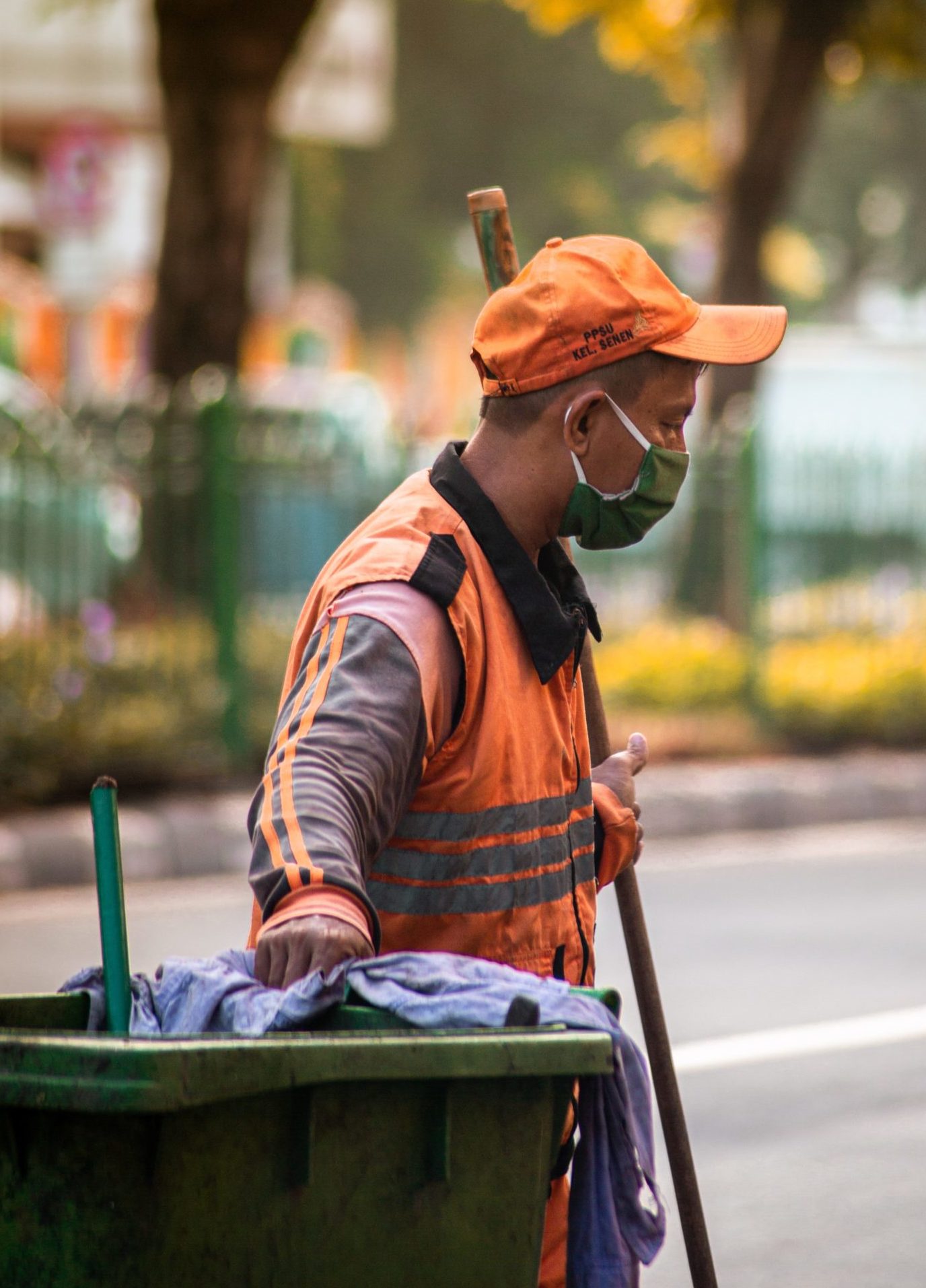Azienda Municipalizzata Igiene Urbana (AMIU)
Multiservice Urban Hygiene Company
An interview has been provided by Dr. Bruno Moretti, personnel director
Moretti@amiu.genova.it
Specialization
AMIU (Multiservice and Urban Hygiene Company) is a joint stock company of the Municipality of Genoa. It is the leader of a group comprising industrial companies operating in environmental protection and in the complete management of the waste cycle.
Health promotion in the workplace for AMIU means promoting:
- healthy lifestyle;
- proper nutrition;
- stimulate physical and mental activity;
- attention to recovery times and sleep;
but also:
- better ergonomics and improvement of the working environment;
- targeted health surveillance;
- job rotation;
- changes / reductions in working hours;
- continuous training;
- counseling.
Number of employees: 1603
Sector
Tertiary: environmental protection and management of the waste cycle
Country
Italy
Main reasons and motives for the decision to implement the age management measures
In AMIU company, the 2015 data of personnel indicated an average age of almost 50 years (49.98) with a percentage close to 20% (19.5%) of over 55. Projecting the figure forward (with turnover blocked) the over 55 will be around 50% in 2020 and even 92% after another 5 years.
Population aging is a phenomenon:
- unpublished because it is new in the history of humanity. (Over 60s were up to a few decades ago 1 out of 20. Now over 60 in the world are 1 out of 10. In Europe 1 out of 5 ……. in Italy 1 out of 4);
- incisive because it acts in all countries of the world, in all social classes;
- irreversible because people live longer and have fewer children.
AMIU started ACTIVE AGEING Project in 2014 as a primary prevention process (approximately with 160 employees) aimed also at promoting the quality of working life of people over 55 who in the following years was extended to all the employees of the Employees / Technicians (other 100 learners).
We cannot underestimate the greater vulnerability of workers over 50 compared to the younger ones: we have found reduced muscle strength, decreased motility of the joints, increased pathologies of the spine, reduced elasticity of the tissues, reduced tolerance to heat and cold, decreased visual ability, hearing loss, difficulty of recovery etc.
The aim is to make workers over 55 feel a resource and no longer a threat or simply a cost. the transition from elder to mature worker occurs.
Age management dimension
Flexible working practices:
- the adjustment of shift schedules;
- special measures of daily or weekly working hours reduction;
- flexible working for older employees.
Health protection and promotion, and workplace design:
- organisational health reports and working groups on health;
- the use of health experts to advise the organisation;
- employee participation and education;
- regular health checks;
- training supervisors and key workers in health management techniques;
- ergonomic workplace (re)design;
- preventive redeployment.
Comprehensive approaches:
- an emphasis on preventing age management problems;
- a focus on the entire working life and all age groups, not just older workers.


Our way towards the age management
AMIU (Multiservice and Urban Hygiene Company) is a joint-stock company of the Municipality of Genoa. It is the leader of a group comprising industrial companies operating in environmental protection and in the complete management of the waste cycle.
In our company, the 2015 data of the staff indicated an average age of almost 50 years (49.98) with a percentage close to 20% (19.5%) of over 55. After becoming aware of and processing the data, we have started studying the most effective solutions.
The first step was therefore to consult the literature and publications on the topic to define which fronts to act on. And consequently, decide the interventions and priorities to be followed. Subsequently, we identified the population classes to be addressed immediately.
In summary, the Active Aging project in AMIU was characterized by a multidisciplinary approach, divided into a series of actions implemented at different times
First, on the periodic medical examination, it was distributed to each employee over 55 (151 employees over the age of 55, 141 men and 10 women.) a questionnaire prepared by the competent doctors to analyze different areas of daily lifestyle.
The areas investigated concern:
- eating habits (consumption of water, fresh fruit and vegetables),
- voluptuousness (alcohol and cigarette smoke),
- physical activity and relative frequency
- proactivity in prevention (frequency of medical and dental checks, donation of blood),
- attitude towards the main dysmetabolism (diabetes and dyslipidemias)
The second change concerned the worker welfare control protocol: the company health protocol reduced (from 18 to 12 months) the interval between periodic visits by workers over 55 and the risk assessment document now also considers the problems of ‘older workers’.
At this point 4 safety training modules were organized and carried out on prevention, nutrition, physical activity mental and relational activity. In total 4000 hours were spent in the classroom.
Specifically, Module 1 concerned: occupational medicine and active aging policies, self-assessment of habits and lifestyles, a new risk assessment integrated by the age factor, a different health protocol.
Module 2 spoke of correct nutrition, the evolutionary path of man, my genes are not deaf, what is needed to eat, how good it is to eat, when it is good to eat.
In the 3rd module we talk about physical activity and posture, the need for regular physical activity; my posture continues to indicate to others and myself who I am, how much I am worth, how I am.
In the 4th module, on the other hand, we talked about mental activity and relational quality, individual happiness and relational quality.
Strengths and weaknesses of our approach
The positive aspects are certainly:
- Active aging develops a positive attitude of the company population towards aging: working on active aging spreads positivity.
- Class training on individual / personal and customizable practical tools for the management of an aging workforce: tools and lessons are easy for everyone; it is easy to participate and understand.
- Measures aimed at older workers for specific risks with changes to the health protocol: the survey and the lessons highlighted critical issues regarding health, food habits and lifestyle. Once the problem has been trying to raise awareness of the employee to improve their habits.
- The gratification for good practices within the various sections of the company is an excellent incentive to move forward.
- Healthy and safe working environments
The costs incurred are those related to classroom activities (teachers, hours worked) to which must be added the increase in the number of medical units.
All the lessons were mainly theoretical; perhaps practical actions would have facilitated the process.
“Aha” moments experienced during the process
The meetings were a very useful comparison experience to substantially modify all those bad habits that quickly lead to suffering from ailments, if not even pathologies, for a time, fortunately or unfortunately, always greater, given the prolongation of the average life.
The objective initially set and achieved was to provide extremely practical and simple to apply information, also justifying in the classroom the motivations that have led over the years to elaborate theories in the field of “physiological” nutrition, non-boring physical activity short but effective posture as a mental attitude.
Promotion of health in the places means activation of education courses for a healthy lifestyle, proper nutrition, stimulating physical and mental activity and attention to recovery times and sleep. But also, ergonomics and improvement of the working environment, targeted health surveillance, job rotation, changes and reductions in working hours and continuous training. We divided these topics into 4 different modules and divided the participants into classes of 15 people to make understanding and discussion easier.
Activities to sustain this initiative
The costs incurred are those related to classroom activities (teachers, working hours) to which must be added the increase in the number of medical visits.
The actions taken are still too close to detect quantitatively measurable benefits, however the feedback received (and the medical reports) show that a positive climate has undoubtedly been established, measurable by the quantity and quality of the individual interactions (started in the classroom and continued via email).

Monitoring system of the effects
Each participant in the project had to complete a nominative questionnaire at the same time as the medical examination and immediately followed by a feed-back, in relation to the main areas of improvement. The questionnaire concerned:
- eating habits (consumption of water, fresh fruit and vegetables);
- voluptuousness (alcohol and cigarette smoke);
- physical activity and its frequency;
- proactivity in prevention (frequency of medical and dental checks, blood donation);
- attitude towards the main dysmetabolism (diabetes and dyslipidemias).
At the end of the lessons, the participants completed a satisfaction questionnaire. These are the results divided by module.
Module1
- More than 96% considered the training moment as a whole useful.
- Almost 90% of the participants consider intervention as primary prevention in the workplace to be “quite” or “very” useful
- The sum of ratings equal to or greater than 7 exceeds 90%
- Among the most appreciated things, in the extended judgments, the clarity of exposure of the company doctor is indicated.
Module 2
- More than 95% considered the training moment as a whole useful.
- Almost 90% of the participants consider intervention as primary prevention in the workplace to be “quite” or “very” useful
- The sum of ratings equal to or greater than 8 is approximately 65%
- Among the most appreciated things, in the extended judgments, the competence of the teacher and the novelty of the topics covered are indicated.
Module 3
- More than 95% considered the training moment as a whole useful.
- More than 90% of the participants consider the intervention as primary prevention in the workplace to be “quite” or “very” useful
- The sum of evaluations equal to or greater than 8 exceeds 70% (taking into account the low number of questionnaires returned)
- Among the most appreciated things, in the extended judgments, the clarity of exposure and the preparation of the teacher are indicated.
Module 4
- More than 95% considered the training moment ‘useful’
- Almost 90% of the participants consider intervention as primary prevention in the workplace to be “quite” or “very” useful
- The sum of ratings equal to or greater than 8 is approximately 65%
- Among the most appreciated things, in the extended judgments, the competence of the teacher and the novelty of the topics covered are indicated.
Beneficial effects of the initiative
The objective initially set and achieved was to provide extremely practical and simple to apply information, also justifying in the classroom the motivations that have led over the years to elaborate theories in the field of “physiological” nutrition, non-boring physical activity, short but effective, of posture as a mental attitude.
All the meetings included “practical” experiences, truly physical or exemplifying, precisely to bring information into individual realities. We positively verified the result through the evaluation of: final satisfaction questionnaires anonymous active participation and, above all, from individual interviews, from numerous questions beyond the time officially dedicated to the meetings and also from the private emails to the teacher who still today confirm that they have applied this or that principle then shared with benefit. The experience was then repeated the following year with the under 55s, with similar effects and results.
Our recommendation
New concepts and words, such as Workability Index, birth rate, active aging policies, morbidity rate, epigenetics, posture, primary and secondary prevention, age risk assessment, compensation strategies, etc. have slowly entered the common lexicon initially of the Project Team and then of all the Personal Management.
We never wanted to see it as an increase in labor costs, but as an investment in people and health also for the company in terms of workability.
The future steps are ergonomics and improvement of the working environment, even more targeted health surveillance, rotation of workstations, and collaboration with institutional observers (universities) to improve cognitive functions effectively and efficiently.

